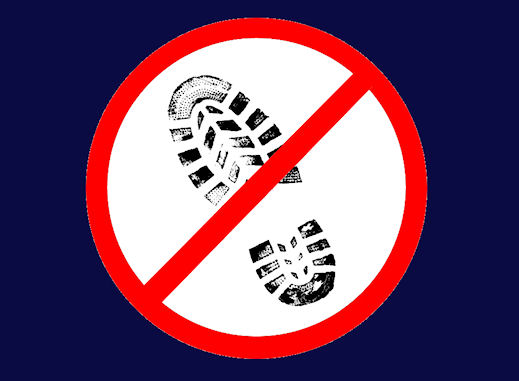Microsoft has spoken out again on the issue of how the Do Not Track (DNT) specification will be handled in Internet Explorer 10, restating that the browser will switch DNT on by default but arguing that this will be handled in such a way that it will reflect users’ preferences.
At stake is whether advertisers can continue to freely track users’ web browsing history and use this to tailor which advertisements a user is shown, or whether they will accept certain limitations on tracking. Thus far the advertising industry has tentatively backed DNT, but Microsoft’s stance with Internet Explorer, the most widely used browser, has thrown the scheme’s success into doubt.
Advertisers are also aware, however, that if DNT fails it could give lawmakers the push they need to introduce legislation restricting tracking.
User choice
Under the DNT scheme, currently being determined by the World Wide Web Consortium’s (W3C) Tracking Protection Working Group, the browser sends an HTTP header with each web server request, specifying whether the user would prefer not to be tracked, or whether tracking is acceptable. The advertising industry’s support for DNT has been based on the condition that users must manually switch the feature on, thus clearly signalling their preference.
 Advertisers have argued they are thus free to simply ignore the DNT signals sent by browsers such as Internet Explorer 10 that switch DNT on by default.
Advertisers have argued they are thus free to simply ignore the DNT signals sent by browsers such as Internet Explorer 10 that switch DNT on by default.
“This group has decided that browsers should be shipped with DNT turned off,” said Mike Zaneis, senior vice president and general counsel of the Interactive Advertising Bureau in July. “Furthermore, we have agreed that browsers shipped with DNT turned on would be non-compliant with the spec… Therefore, a company can be compliant with the W3C spec and ignore a signal that they know to have been sent by a default setting.”
Microsoft on Tuesday responded to this line of reasoning, explaining that when Windows 8 is installed it will notify users that DNT is enabled and will give them the option at that time of changing the setting.
Microsoft’s argument, therefore, is that if users accept Windows 8’s default “Express Settings”, it is a legitimate indication that they would prefer not to be tracked by advertisers.
“Customers will receive prominent notice that their selection of Express Settings turns DNT ‘on’,” wrote Brendon Lynch, Microsoft’s chief privacy officer, in a blog post. “In addition, by using the Customise approach, users will be able to independently turn ‘on’ and ‘off’ a number of settings, including the setting for the DNT signal. A ‘Learn More’ link with detailed information about each recommended setting will help customers decide whether to select Express Settings or Customise. A Privacy Statement link is also available on the screen.”
When IE10 is installed on Windows 7 it will give users a “prominent notice” that DNT is turned on in the browser, with a link providing more information about the setting, according to Lynch.
User research
Lynch said that since May Microsoft has carried out research indicating “strong support” for this approach to DNT among users, which is another way of saying that the DNT signals sent by IE10 should be accepted as a legitimate reflection of user preferences.
Other major browsers, including Mozilla’s Firefox, Google’s Chrome, Apple’s Safari and others, include DNT options, but IE10 is the first to switch it on by default.
The Digital Advertising Alliance (DAA) – which counts Microsoft as among its members – has blasted Microsoft’s decision with IE10, saying it undermined the work that had already been done in developing DNT.
“The DAA is very concerned that this unilateral decision by one browser maker – made without consultation within the self-regulatory process – may ultimately narrow the scope of consumer choices, undercut thriving business models, and reduce the availability and diversity of the Internet products and services that millions of American consumers currently enjoy at no charge,” Stu Ingis, general counsel of the DAA, said in a May statement.
W3C engagement
The version of the DNT specification released by the W3C in June stated that browsers may prompt the user to configure tracking features, but may not configure the feature for users. Under that specification, IE10 can’t claim to be in compliance with the DNT specification, according to the W3C, and if it does so it may fall afoul of regulators.
Microsoft responded by pointing out that the specification is still at the draft stage and may change.
“We are engaged with the W3C, as we are with many international standards bodies. While we respect the W3C’s perspective, we believe that a standard should support a privacy by default choice for consumers,” said Lynch at the time.
Microsoft’s position has received support from the European Commission. In June the EC’s director-general for information society and media, Robert Madelin, wrote in a letter to the the W3C that the EC believes browser-specified defaults should be allowed by the specification.
“The standard should foresee that at the install or first use of the browser the owner should be informed of the importance of their DNT choice, told of the default setting and prompted or allowed to change that setting,” Madelin wrote.
Others have argued that Do Not Track doesn’t go far enough. While it will keep most advertisers from sending out targeted ads, it doesn’t stop them or web companies from collecting information from online users.
Are you a Firefox enthusiast? Take our quiz.




